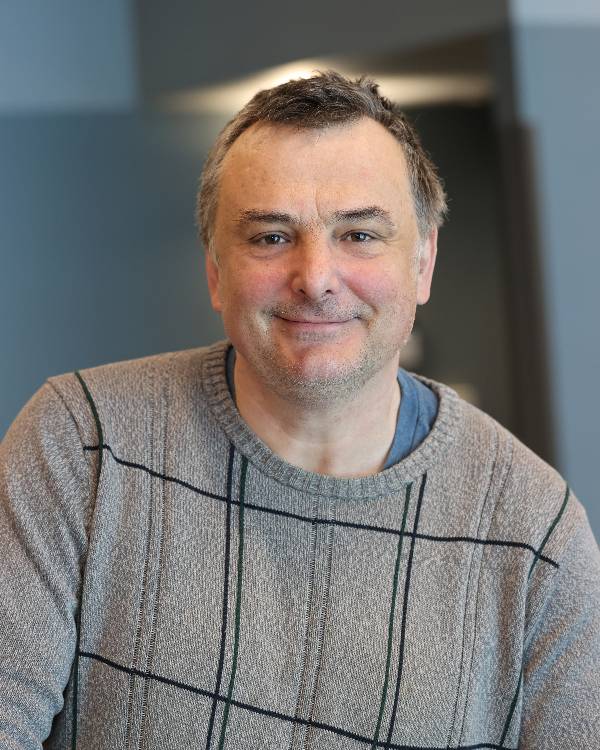BTG stays hot in quantum computing’s cold, cruel world

Dr. Slowa Solovyov, BTG
Among Advanced Energy Research and Technology Center companies, nobody’s hotter than Brookhaven Technology Group – where the colder things are, the better.
Well, that’s not entirely true. Founded in 1998, BTG is actually on a mission to bring quantum computing in from the cold – that is, to facilitate super-computing, which currently requires ultra-frigid temperatures, in more temperate environments.
According to the U.S. Army Research Laboratory, the AERTC cornerstone has got the goods: BTG has completed Phase One of a U.S. Department of Energy-funded Small Business Innovation Research project focused on the design and evaluation of a prototype superconducting magnetic energy-storage system, with Phase Two funding – $1 million over two years – kicking in this month.
The research involves what BTG co-founder and Chief Scientist Slowa Solovyov calls “high-temperature superconducting signal lines” – essentially, a go-between plugging frigid quantum-computing environments into computers in human-tolerable spaces.
It’s all about quantum bits – qubits, as they’re known – which are quantum computing’s answer to classic-computing binary digits. Conventional thinking, according to Dr. Solovyov, is that practical quantum computing requires a minimum of 1,000 qubits, each of which requires its own heat-generating, efficiency-zapping electrical connection.
“Each of these elements requires some kind of electrical connection between the room-temperature environment where humans live and the ultra-cold environment where quantum effects take place,” Dr. Solovyov notes. “So, if you are designing a large quantum system, now you have to run tens of thousands of these cables.
“It becomes very large and unwieldly … and each of these cables conducts heat, hot on one side, cold on the other side,” he adds. “So now you are losing energy, the same way you lose energy in your house through windows and doors.”
Enter BTG, where “thermal budgets” are always in play – and “high-temperature” is a relative term.
The current focus is on “superconducting films” that can conduct signal lines at relatively high temperatures – they “don’t quite go to room temperature,” according to Dr. Solovyov, but they can do the trick at temperatures within the reach of “conventional cooling” systems.
“They are very compact and have very low thermal loss,” the chief scientist adds. “They could enable connection of large quantum-computing systems efficiently and inexpensively … by solving several relevant problems.”
Phase Two is actually a two-birds-one-stone situation. BTG will be working with an international cadre of laboratories and schools led by the Fermi National Accelerator Laboratory in Illinois, which is incorporating quantum computing into its cutting-edge research into dark matter, a hypothetical form of matter thought to compromise 23 percent of the universe, while real matter is only 4.6%, the rest, 72% being the dark energy. The experiment, called ADMX (The Axion Dark Matter eXperiment) will detect what new particle physics is responsible for dark matter.
The science is galactically thick, but Dr. Solovyov notes one theory in particular, suggesting dark matter is comprised of weak interacting particles that create slight radio-frequency perturbations when interacting with strong magnetic field , which can be detected in a “superconducting cavity.”
The hope is the Fermilab experiment, bolstered by BTG’s cutting-edge quantum-computing cables, will be able to detect those weak electromagnetic signals, inching science closer to understanding dark matter’s makeup – and perhaps even identifying a new type of fundamental particle, Dr. Solovyov says.
Naturally, a breakthrough of that scope extends way beyond the DoE’s “agency need,” according to Dr. Solovyov, who earned a PhD in solid state physics from Ukraine’s Institute for Metal Physics and references “a much broader market” for these kinds of quantum-computing advances.
“There’s a broader reach, and not just confined to scientific research and instruments,” Dr. Solovyov says. “There is a lot of interest from the nascent quantum-computing community in this sort of product.”
Fortunately for BTG, the Advanced Energy Center’s top-grade laboratory facilities and professional management team are always ready to help the company survive and thrive on quantum computing’s cutting edge.
Among the AERTC’s primary advantages, according to Dr. Solovyov, is access to other next-generation tech companies on similar developmental paths.
“What we benefit from most is from presence of other high-tech companies in the incubator,” the chief scientist notes. “In the case of the Phase Two project, we will be using advanced inkjet printers to deposit a sort of mask on the superconducting structure that will be used to develop the signal line structure … and the technology at ChemCubed seems very suitable for that step of the process.
“So, beyond the facilities, we have access to those kinds of collaborations,” Solovyov adds. “You can’t overstate the importance of collaborating with other high-tech incubator tenants.”
